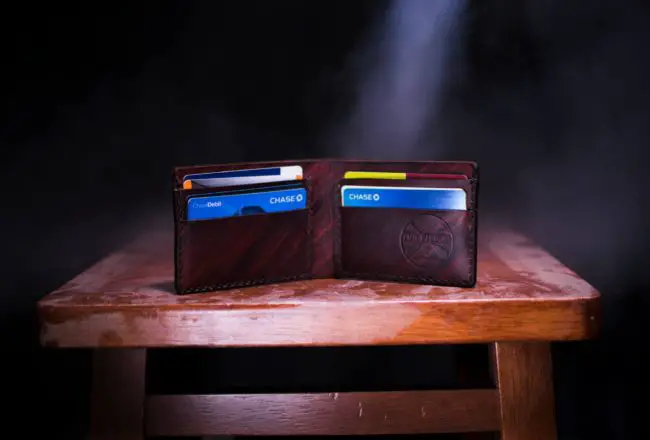Your Chase routing number is essential for linking, transferring and saving your money. Here’s a list of all Chase routing numbers and everything you need to know about your bank account.
How Your Chase Routing Number Works (A Full List and Explanation)
For most people, banking matters are not easy to understand. In fact, most banking matters are more complicated than they need to be.
Usually, we are unaware of numerous factors associated with banking. For instance, we don’t really understand as to for what reason the small numbers are there on the checks. However, these digits are of great importance to the banking system.
If you are a Chase Bank customer and have ever tried to make an online transaction, you may have come across the words ‘Chase routing number’.
It is essential to know your routing number to transfer the money, but the question is what is Chase Bank routing number and where to find one. To know the answer, just continue reading.
To start with, we need to know what a routing number is and why these small digits are so important.
Although this post is for the Chase Bank customers, users of other banking institutions can also draw useful information. Especially if you make money online or want to invest your money effectively.
All of this information is helpful to know if you’ve ever tried to cash a check online.
I can easily track all of my accounts with Personal Capital, but I never seem to be able to track my routing number.
List Of Chase Bank Routing Numbers
We summarized the Chase Bank routing numbers by each state in a simple table to make it easy to understand. You can see the routing number for every state that they operate in.
For example, the Chase Bank routing number for California is 322271627.
Here is the official list of routing numbers, which will prove handy if you are a Chase Bank customer.
| Chase Routing Number Table
| |
| Region
| Routing Number |
| Arizona | 122100024 |
| California | 322271627 |
| Colorado | 102001017 |
| Connecticut | 021100361 |
| Florida | 267084131 |
| Georgia | 061092387 |
| Idaho | 123271978 |
| Illinois | 071000013 |
| Indiana | 074000010 |
| Kentucky | 083000137 |
| Louisiana | 065400137 |
| Michigan | 072000326 |
| Nevada | 322271627 |
| New Jersey | 021202337 |
| New York – Downstate | 021000021 |
| New York – Upstate | 022300173 |
| Ohio | 044000037 |
| Oklahoma | 103000648 |
| Oregon | 325070760 |
| Texas | 111000614 |
| Utah | 124001545 |
| Washington | 325070760 |
| West Virginia | 051900366 |
| Wisconsin | 075000019 |
Derivation of a Bank Routing Number
The first four digits of Chase Bank routing numbers are the symbols of the Federal Reserve. This provides the information as to where the printing of a check took place.
The next four digits serve as the American Bankers Association (ABA) identifier. These are the digits, which clearly define the financial institution, with which you have opened an account.
Now come to the last digit. This is the check digit, which normally comes into existence by using an algorithm.
The purpose of this digit is to authenticate all the 8 digits of a bank routing number.
The banking system can validate this check digit by calculating the algorithm and drawing a comparison with the digit printed on the check.
A routing number tends to be valid if the sum of the algorithm is divisible by 10. You need to know your routing number on a routine basis, including for purposes of:
- Making deposits directly, such as for your investment accounts and check payments
- Automatic bill payments for utility bills, electric, etc.
- Check to process
- Wire transfers
I created a free credit card and budget tracker that will enable you to save down your routing numbers easily. This will help you build a full personal financial plan. Download the free tracker below and get started living better financially.
What is the Checksum Algorithm?
Usually referred to as modules 10, the checksum algorithm is a straight summation method, which helps to authenticate a specific routing number. It involves a series of addition and multiplication, executed on the digits of routing numbers.
How Do Chase Routing Numbers Work?
To know how routing numbers work, we need to consider some essential aspects associated with these numbers. We will discuss these factors in the later part of this post. However, first, we will try to explain what these numbers are and what their purpose is.
Also known as a routing transit number (RTN) or ABA (American Bankers Association) number, a routing number identifies the financial institution associated with a particular transaction. To put it simply, if you need o make a transaction or transfer an amount by depositing a check in an ATM, you will have to provide the routing number.
Hence, the job of a Chase routing number is to help the banking system while identifying the financial institution from where the check was drawn.
This is a process, which allows the financial institutions to process your transaction securely and within less time.
The Importance Of Your Routing Number
The importance of a routing number is evident from the fact that you can’t transfer an amount without knowing it. Hence, this number is crucial for making electronic transactions through the Automated Clearing House network or between financial institutions.
Your Chase Routing Number is an essential code for money transfers. For instance, if you want to transfer an amount online, you will submit the routing number to provide the branch details.
Therefore, providing the correct and valid routing number is important to initiate a money transfer.
You need to verify the Chase routing number prior to making any transaction. Moreover, in order to put your chase routing number, you should first provide the state name where the bank locates and the type of bank account type.
You can’t use the routing number on your checks for wire transfer. This number is different from the routing number that you are going to use for a wire transfer.
In addition, the Chase routing numbers are also important for the prepaid cards, savings accounts, and IRAs. The American Bankers Association (ABA) normally manages the official routing number registrar.
The routing number also helps to identify the financial institutions while transferring an amount, for check processing, Automated Clearing House (ACH) deposits, and bill payments. Similarly, for international transactions or processing of the check, it is essential to provide the bank routing number.
Routing numbers make it easy for the financial institutions to process the national as well as international transactions.
This means that rather than reading a check to identify your bank, routing numbers assist the bank staff to process the checks without any confusion.
Even the online banking system takes assistance from these numbers to know where to transfer the money. This makes the transfer process fast and more secure. A bank may have numerous routing numbers, depending on the transaction mode and the location of a bank account.
However, there is no possibility of having identical routing numbers for two different banks.
See Related:
How To Find Your Chase Bank Routing Number
Finding a Chase routing number may turn out to be a daunting task. However, if you got no patience to find the routing number for your Chase Bank account, there is a simple solution to find one. The Chase routing number is available on every check in your checkbook. You just need to look at the bottom left corner of the check.
A Chase routing number is a nine-digit number. Every check has three numerical strips, printed in MICR (Magnetic Ink). This makes it easy for computers to read these numbers.
The second number that you see on the right side of your check is your nine-digit account number. After the account number, there is a four-digit check number. These two numbers can also appear in reverse order on your check, so better be careful while reading them.
What To Do If You Don’t Have A Check Book?
Since making transactions through checks is not a common trend these days, it is possible that you don’t have a checkbook with you. If this is the case, you can try some other ways to locate your Chase routing number.
Given below are the simple steps, which you can follow to find your Chase routing number.
For this purpose, you need to open the Chase Bank’s website in your browser.
After that, follow these steps:
- Log in to your online account by providing the username and password. If you don’t have a Chase chequing online account, you need to sign up first.
- After signing in, click the “See statements” button. By doing so, you will open one of the statements in a PDF format. Here, you can find your Chase Bank account number at the top right corner of the statement page.
- In order to look for the Chase routing number, you have to click on the last four digits of your chequing account number.
The Chase routing numbers depend on the location of your Chase Bank, where you have opened an account. This is the reason there are 24 different Chase routing numbers throughout the US. The basic purpose of providing a specific routing number for each of the Chase Bank accounts is to keep the accounts organized.
However, your routing number for Chase Bank doesn’t change when you move from one state to another. For instance, if you have an account in Oregon but then moved to West Virginia, your Chase routing number will remain the same.
On the contrary, if you open a new Chase account, you have to find a new routing number for this specific account.
Origin of Routing Numbers
In fact, routing numbers are the most essential part of the banking system, especially when it comes to online transactions. In order to know how your routing numbers work, we need to understand the origin of these routing numbers.
Originally, the major initiative regarding the creation of routing number was taken by the ABA (American Bankers Association). By creating the routing numbers in 1910, the ABA made it possible to render check processing more secure and much easier for the banking institutions.
At that time, there were no computers to assist the financial institutions and they were looking for a viable method to identify the paying bank. A paying bank is an institution, which is actually responsible for honoring the check. This lead to the creation of unique identification numbers, which we now refer to as routing numbers.
The basic purpose of creating the routing numbers was to secure the check processing and make it manageable. Moreover, it was a better way to ensure that the person bearing the check would get the cash from the respective bank. It rules out any kind of confusion, which ensures that not a single transaction goes to the wrong bank account.
The routing numbers of each bank also contained the first digits of the Federal Reserve. This served as a symbol to identify the type of institution and the Federal Reserve district of a bank account.
Later on, these routing numbers were incorporated into the electronic check-cashing networks. This allowed the banking system to speed-up the processing of honoring a check.
After the inception of the Federal Reserve, this financial institute played a key role while putting a check on the processing of various modes of payments. This is the reason, why a Federal Reserve digit is a part of the routing number of every bank.
Routing Numbers For Wire Transfers Are Different
This sounds like a bit tricky, as there are different routing numbers for the wire transfers. Hence, you need to be careful while making wire transfers. Moreover, Chase Bank routing numbers are also different depending on the types of accounts.
For example, if you are going to make a wire transfer or receiving an amount through this process, it is essential to know the particular routing number code for a specific transaction.
On the other hand, if you are transferring money to an international bank account through wire transfer, it is important to know the bank identification code. This is usually known as the Swift (Society for Worldwide Interbank Financial Telecommunication) code.
Moreover, this code is also important for the recipient bank. It allows financial institutions to receive wire transfers.
A SWIFT code is internationally acceptable; hence, it allows to identify a global financial institution.
Another name for his code is the bank identifier code. When you are looking forward to receiving an amount through wire transfer, you will have to provide the swift code.
Routing Number vs Account Number
You obtain a routing number when you open an account with Chase. In addition, you have your own unique account number with your account. Both of these numbers are very important to you and the bank. They help you identify both the customer and the bank involved in the money movement processes.
While the account numbers are specific to each account holder like the way a customer ID or fingerprints are, routing numbers help identify each financial institution with a unique numerical and are unique to each bank. Both are used to indicate where to send funds or the institution to receive the funds in a transaction.
Your routing number is a nine-digit number. However, your account number will typically be a 10-12 digit number that is specific to your account only.
The routing number is the first set on the left corner of a check and is usually pink in color.
The account number is the next set of numbers after the routing number and is typically green in color. Both are between the character symbols.
Conclusion on Chase Bank Routing Number
Your Chase Bank routing number is an important number, which facilitates the financial institutes to complete the online transactions. You need to know this number when receiving or sending money online.
Since it is a long number, it would be better to write it down or save it in your phone. This will allow you to access your Chase routing number, whenever required.
Here is a roundup of all the information about the Chase routing numbers that we have provided in this article.
A Chase routing number is a 9-digit number that helps to locate the location of the bank where you have opened an account. It is essential to finalize financial transactions such as online payments, phone banking, wire transfers, and automatic bill payments.
There are three simple ways to find your Chase routing numbers. You can do this by bookmarking our list of routing numbers, looking at your check, through an online bank statement or by contacting your bank.
With this, we hope that this article will justify its purpose and provides you with all the information that you were looking for regarding how your Chase routing number work.
Let us know in the comments below if you have any additional questions.
Related Resources
Subscribe to the Millionaire Mob early retirement blog newsletter to find the best travel hacking tips, dividend growth investing, passive income ideas and more. Achieve a financially free lifestyle you’ve always wanted.







No Comment